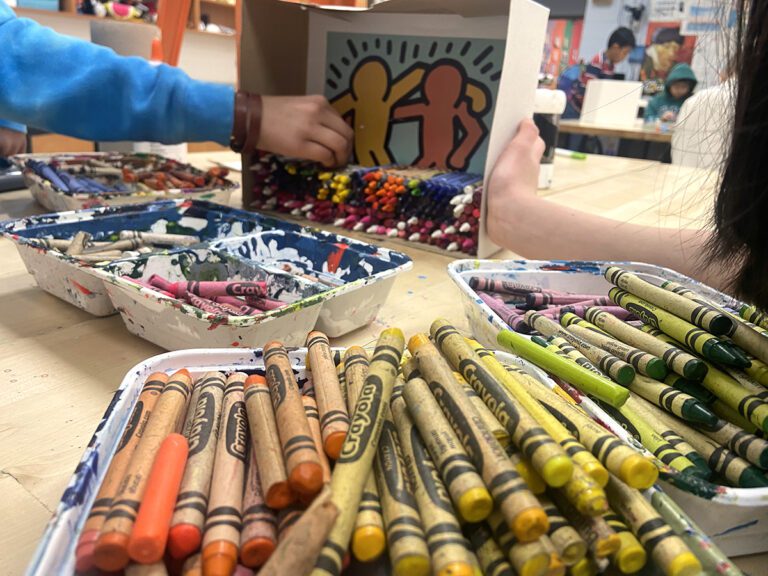As art teachers, we often forget about the “journal” part when it comes to visual journals. We are so wrapped up in creating beautiful pages or filling space with doodles or creative prompts we forget that text can be an important part of our visual journals as well. Whether you are writing creatively, taking notes, or even collaging, your journal will be at its best when you include more than just images.
With this idea in mind, let’s take a look at 6 simple ways to incorporate text in your visual journal.
1. Take notes.
Whether you are taking notes on a TED talk, a conference presentation, or a book you are reading, consider doing it in your visual journal.

There are so many methods that can add visual interest. One idea is to try sketchnotes. Nic Hahn can teach you how to get started in this PRO Learning Pack. Or, you could doodle, as doodles actually help you concentrate and pay attention.
Whatever method you choose, it’s sure to enhance your practice in more ways than one.
2. Make lists.
When you’re stuck creatively, it can sometimes help to work on something simple. What is simpler than making a list?
Try:
- A to-do list
- A grocery list
- A list of your favorite foods
- A list of your favorite movies
- A list of inspirational people you admire
- A list of the best decisions you’ve ever made.
Whether the lists live on their own or inspire other work, they can make a great addition to your visual journal.
3. Incorporate storytelling and personal narratives.

Everyone tells their stories differently–some through writing, some through images, some through a combination of the two. It may be a long story with some sketches interspersed or a map pasted in your journal with some drawings and writing added. No matter how you tell it, your story will be of interest on both a personal and a visual level.
4. Incorporate collage.

Collage is another way to help get past that creative block and the intimidation of a white page staring back at you. It is also a great way to improve your handle on drawing and composition. In fact, AOE Writer Debi West uses collage as a visual journal requirement to help develop her students’ skills.
5. Use text as a design device.

Regular rules on writing can go out the window when it comes to your visual journal. It doesn’t need to be left to right, top to bottom. Your writing and lettering can take any form you want. Fill your empty spaces and open areas with text, adding layers to your visual composition.
6. Embellish your text.
Nothing says that your text needs to look like normal writing! Go back through with pens, highlighters, watercolor pencils, markers, or any other material that might add some visual appeal. Adding color and flair can make your writing more prominent and accentuate its design features.
Whether it is a quick list, a short story, or filling your pages with all different types and styles of writing, text can be a great addition to your visual journal. Use text to embellish your old work, inspire some new work, and add more layers and visual interest!
How do you incorporate text in your visual journal?
Which ideas here would you like to try?
Magazine articles and podcasts are opinions of professional education contributors and do not necessarily represent the position of the Art of Education University (AOEU) or its academic offerings. Contributors use terms in the way they are most often talked about in the scope of their educational experiences.





